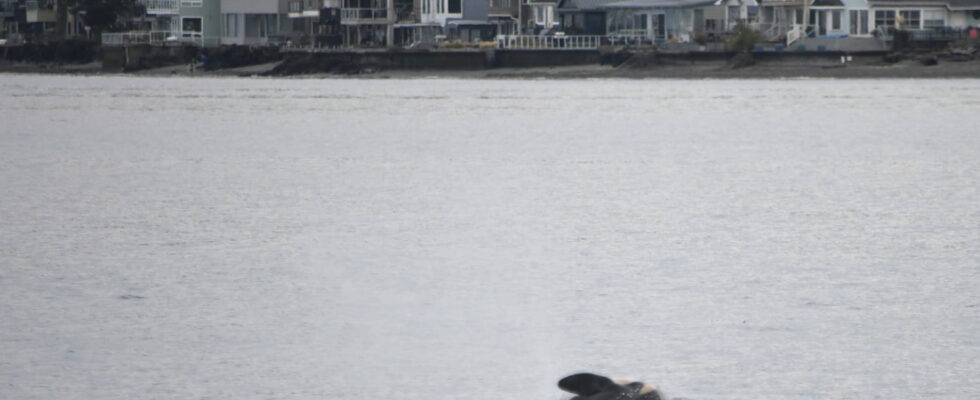A female orca carried her dead calf for several days. His behavior was analyzed by experts.
J35 or Tahlequah is a well-known female orca. She is the mother of two cubs: the first was born 14 years ago and the second was born in 2020. Unfortunately, the marine animal lost two other cubs, the first in 2018 and the second at the beginning of this year. year 2025. Health problems were quickly suspected for her youngest, in particular he was born prematurely. In this species, calves also face a very high mortality rate during the first year.
After this terrible disappearance, the 26-year-old orca was seen carrying her dead calf (J61) in the Puget Sound region, an arm of the Pacific, revealed the whale research centerbased in Washington State, United States. She had already made such a gesture a few years earlier for her previous deceased calf. She had traveled more than 1,600 km in 17 days with the body. This time, she would have carried the little one for at least 11 days, according to KOMO Newswho shared images of this funeral trip.

Experts from the research center analyzed this behavior of the animal. They believe it’s his way of grieving. The teams would not be surprised if the grieving process in orcas lasts almost a lifetime, as in humans who lose a baby. “The parts of their brains that are responsible for things like memory, emotions and language are very well developed, in fact in some ways more developed than the human brain,” the researchers explained.
Tahlequah, suffering such mourning for the second time, would therefore be even more affected. “The death of any calf is a tremendous loss, but the death of J61 is particularly devastating, not only because she was a female, who could have one day potentially led her own line, but also because of his mother’s history”, explained the specialists in their publication on social networks. The southern orca is, in fact, an endangered species, with fewer than 75 individuals still alive, including 23 females of reproductive age. They are, moreover, prone to miscarriages and the species lacks prey to feed on, in particular because of pollution.
